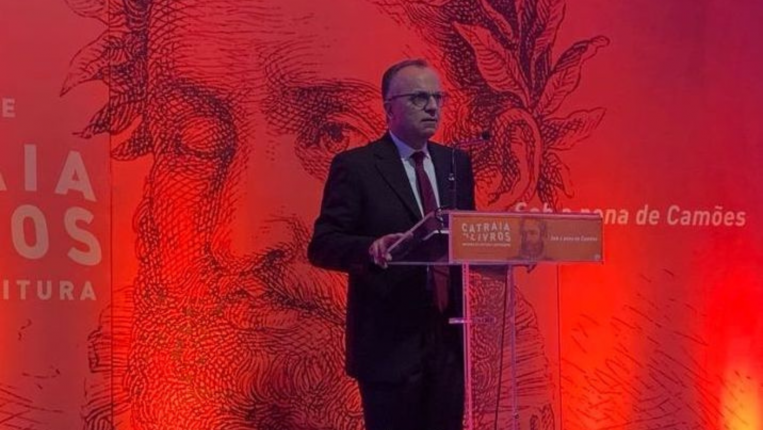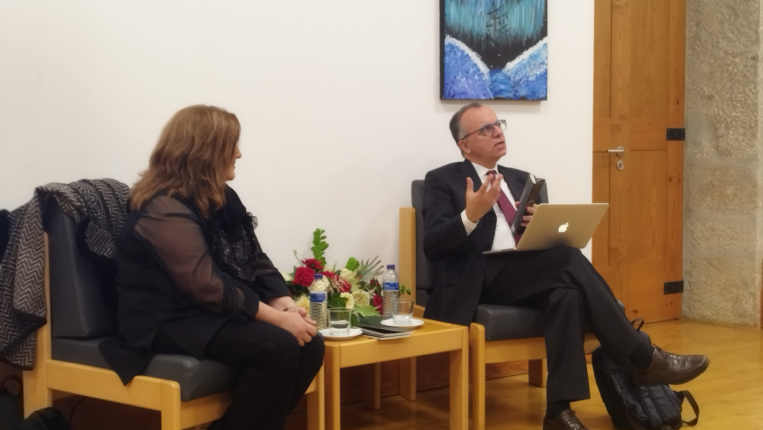Professor at the Catholic University of Braga says that Camillian research is more productive in Brazil than in Portugal
University professor and essayist Cândido Oliveira Martins regrets that Camilo Castelo Branco, ‘the great prose writer of the Portuguese language’, is still seen by many as a provincial writer confined to passionate narrative.
Cândido Oliveira Martins argues that the approach to Camilo Castelo Branco's work in Portuguese schools ‘should be rethought’, suggesting not only that it should be ‘transversal to all areas of secondary education’ but also that the classic ‘Amor de Perdição’ should be replaced by ‘Novelas do Minho’, which is more likely to create empathy with the students.
In what sense is reading Camilo Castelo Branco still essential today?
Because Camilo is a great prose writer of the Portuguese language, a powerful storyteller, a versatile cultivator of various genres (from historical narrative to topical novel, from theatre to polemic, from short narrative to literary criticism). In short, Camilo is the builder of a throbbing repository of life in 19th century Portugal, without forgetting our congenial atavisms, analysed through the prism of a blunt and often sarcastic satire.
In this sense, as a whole, the vast array of Camillian narratives constitutes a majestic panel of a certain Portugal, undergoing considerable change at various levels (political, social, cultural and literary) - from the old Portugal of the absolutist Ancien Régime, to the new romantic-liberal Portugal, without forgetting the Portugal of Fontismo, to the Portugal of the last quarter of the 19th century. And all centred on a literary geography predominantly located in the north - Porto, Minho and Trás-os-Montes.
Camilo Castelo Branco was, for many, the great Portuguese romantic, but he also had forays into many other currents, aesthetics and genres. Is he a writer who is impossible to ‘tidy up’?
Camilo is, exemplarily, a writer between two worlds - between a late romanticism, assimilated from his youth; and new post-romantic trends, of an aesthetic taste that he knew and admired, such as the novel of the day, in the manner of the admired Balzac, an example for the composition of his countless scenes of the human comedy.
However, in almost half a century of literary life, he preferred to practise a spontaneous realism, without the dictates of the realist school, typical of a positivist worldview. In fact, Camilo was not indifferent to the fashion and stylistic modernity of Eça's novel, but chose to parody realism/naturalism in Eusébio Macário and A Corja in a hilarious exercise. After all, the new directions threatened his predominant symbolic place in the Portuguese literary milieu.
Camilo was the antithesis of the writer without a biography. Was it life that fuelled the books or the other way round?
Camilo always explored, publicly and skilfully, multiple links between his lived existence and his written work. From the outset, the process proved to be profitable in terms of repeated exposure, anchoring in reality, guaranteed popularity and captivating the reader. Ultimately, it also exploits a colloquial drive with readers, engaging them in writing with the stamp of truth. But with the intelligence of self-criticism and the ability to laugh at himself.
And some biographers, even during Camilo's lifetime, prolonged this tendency by exploring the vein of the ‘novel of the novelist’ in a tone of panegyric - about the novelist who claimed not to have imagination, but rather memory (of what he had experienced, heard, witnessed and read), in the name of the obsessive ‘truth of fiction’. For Camilo, talking about himself in various ways was essential to making a name for himself in the world of letters of his time.
Is the Academy still giving Camillian's work the attention it deserves? What facets of his gigantic oeuvre are still in need of further study?
With such an extensive literary work and a remarkable wealth of themes, there are several areas that still deserve renewed critical attention, even in the light of new perspectives and new contemporary concerns. As well as putting off potential researchers due to its enormous length and variety, Camilo's work continues to fall victim to some hasty and unjustified stereotypes - Camilo as a provincial writer, an author confined to passionate narrative, a man with a conservative worldview, etc.
Unfortunately, in Portugal, given the greatness and diversity of Camilo's work, little innovative research and essayism is produced, using appropriate and up-to-date theoretical-critical perspectives. On the other hand, in recent decades, in good Brazilian universities (such as USP or UNESP), it has become easier to find young undergraduates, especially postgraduates, who are very interested in reading Camilo and producing research on the writer, as well as teaching colleagues and researchers who are very productive in this field.
Camilo in schools is practically reduced to the unavoidable ‘Amor de perdição’. Does this seem like the best possible approach to Camillus' work?
Well-prepared and motivating teachers can energise the pleasure of reading Amor de Perdição in the classroom. But the gateway to Camilo could be something else - for example, one of the short and remarkable Novelas do Minho; but also suitably selected short narratives.
Clearly, the Camilo of the humorous and satirical narrative would gain more young readers than the writer of the passionate narrative, more demanding to be worked on in the classroom. One thing is for sure - Camilo's presence in Portuguese programmes deserves to be rethought, starting with the fact that it cuts across all areas of secondary education.






